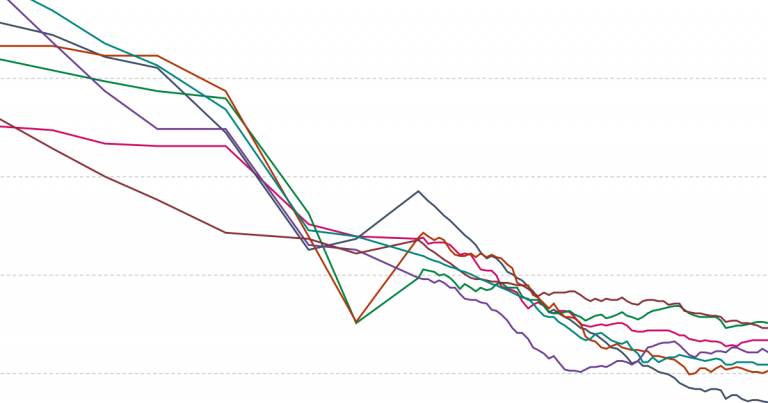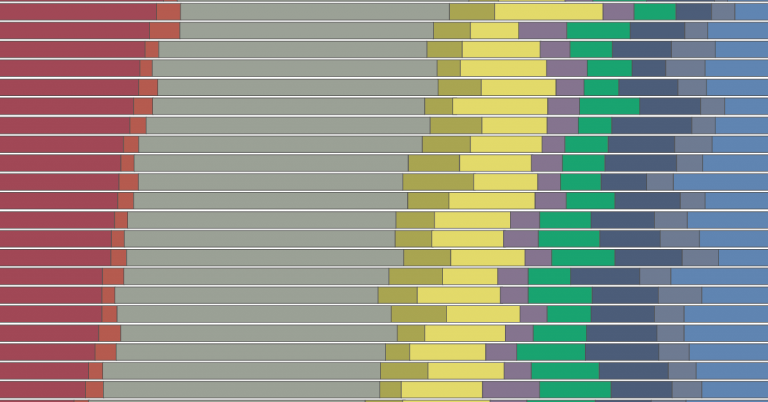Summary
The primary way to measure working hours is with surveys, which are often aggregated with other types of data to provide the most comprehensive picture. But the data on working hours can have limitations, mainly due to differences in definitions, underlying sources, and their methods. By understanding these limitations, the study of working hours can still tell us a lot about our lives and the world.
Work is a central part of our lives. It is something we do almost every day, for much of the day, for decades on end. Because it is so central, looking closely at how much time we spend working can tell us a lot about our lives and the societies we live in.
The data on working hours shows, for example, that rather than working more than ever — as is so commonly believed — people in many countries today work much less than in the past 150 years.
Working less means being able to spend time becoming more educated, or simply enjoying more leisure time. This is substantial progress, but there is still huge inequality across countries, and progress still to make.
To understand these changes in societies and people’s lives over time, and the substantial differences we see in the world today, it is crucial to measure and study how much time people spend working.
How are working hours actually measured? Where does the data come from, and how can researchers reconstruct long-run trends?
Here we provide an overview of the main data sources, compare the data, and explain the relevant differences and measurement limitations.
Surveys
Surveys are the primary way to collect data on working hours. They are typically conducted by national statistical agencies and come in three main types: labor force surveys, establishment surveys, and time use surveys. These surveys all provide an important perspective on working hours, but there are some key differences.
Labor force surveys collect data on employment status and time spent working by asking individual workers themselves. Of the survey types, these provide the most comprehensive perspective, covering hours actually worked in all economic sectors as part of both formal and informal employment, full-time and part-time, as well as self-employment and unpaid family work.1 But labor force surveys only cover residents of a country above a certain age (usually 15), which depending on the country might exclude a non-trivial number of workers.2
Establishment surveys collect data on employment and working hours as reported by employers.3 But because hours are reported by employers, these surveys often only cover paid or contractual hours and exclude self-employment, informal work, and some smaller firms.4 On the other hand, establishment surveys provide more detail on the industry of work than other surveys, and are more consistent with how GDP is measured, making them useful for studying labor productivity.
Time use surveys collect data on how individuals spend their time — down to the minute — across a number of activities in a typical day, including paid work.5 This level of granularity provides a useful complement to the other surveys, but as a trade-off time use surveys sample fewer people and are conducted less frequently and by fewer countries.
National accounts
To get the most comprehensive perspective on working hours possible, many countries aggregate data from these surveys with data from other sources — such as censuses, tax records, and social security registers — in an economic measurement framework called national accounts.
National accounts, and the surveys they rely on, are standardized to a degree across countries, which can facilitate international comparisons.6
But these comparisons often have limitations because many countries still implement the methods in different ways. For instance, countries might bring together different data in their national accounts, or aggregate it differently. And many countries don’t have the capacity to conduct comprehensive surveys of their labor force and produce national accounts-based statistics, giving a more limited view of work there.7
Comprehensive, cross-country data on working hours just isn’t available for the years before the mid 20th century. But researchers like Huberman and Minns (2007)8 have been able to fill some of the gap by reconstructing long-run trends for a selection of countries. How do they do it?
Through often painstaking effort, researchers have been able to find and piece together the relevant historical records that do exist. In the work of Huberman and Minns, one of the key sources for historical data on many countries is a report from the US Department of Labor published in 1900.9 The report compiled the records of many thousands of workers across numerous sectors from establishment surveys in 88 countries and territories. To reconstruct the trends in later years, Huberman and Minns pulled together data from the International Labor Organization, the work of peer researchers, and other sources.10
This was an impressive feat of reconstruction, but historical records like this do have limitations. For instance, as exhaustive as they were, the establishment-level records used by Huberman and Minns still excluded agricultural work, part-time work, and many smaller firms.
The work by Huberman and Minns is an important example of how researchers often combine and adjust underlying sources to produce one-off cross-country estimates. Another important study is the one of Bick, Brüggemann, and Fuchs-Schündeln (2019),11 who further standardized labor force surveys to enhance comparability for a selection of countries.
Besides these one-off estimates, several international organizations and research centers aggregate the working hours estimates published by national statistical agencies into cross-country datasets. The two most important datasets come from the OECD and the Penn World Table (PWT). These both draw on national accounts estimates when available, but they can differ in the other sources they use and their method of aggregation.12
In the chart you can compare annual working hours data from these four datasets. The data is shown one country at a time — with France currently selected. You can look at other countries by clicking ‘Change country’ on the chart, but note that not all sources publish data for every country.
As expected, there are differences between the sources. In 2000, for instance, Bick et al. estimates 1,642 hours of work for French workers, OECD estimates 1,558 hours, PWT estimates 1,550 hours, and Huberman and Minns estimates 1,443 hours. These differences are due to the use of different underlying sources and methods. Bick et al. use only labor force surveys; the others all rely primarily on national accounts data, but which nonetheless still have differences.
It’s also clear that these differences between sources are quite small when compared to the huge changes over the longer run. The difference between sources in 2000 is at most 200 hours, while the historical data from Huberman and Minns shows that from 1870 to 2000 annual working hours in France decreased by 1,725 hours (from 3,168 to 1,443 hours).
The analysis here shows that working hours data can have limitations — due to differences in the sources or the way the method is implemented — but that what these matter for our interpretation of the data depends on the context.
In a context where precise comparisons of similar countries is important, smaller differences between sources can really matter. This is why to compare recent working hours levels in the US and Europe, Bick et al. used only labor force surveys, which they standardized even further to maximize cross-country comparability. But as a trade-off, it was only possible to look at a small selection of richer countries.
In a context where we want to focus on a larger scale — such as the long-run historical trends we see in the chart — the limitations of the sources are not large enough to undermine our conclusions.
Large international datasets like PWT do not have the highest levels of cross-country comparability, but they allow us to look at many more countries across the world and uncover broad and important trends, such as the large differences in working hours between the richest and poorest countries.13
PWT and OECD are also useful in contexts where we want an exhaustive picture of the trends in individual countries, since they are often based on national accounts that bring together data from many sources to give a comprehensive perspective on working hours.
The data on working hours isn’t perfect, and it’s important to understand the limitations, but it can still tell us a lot about our lives and the world.
Continue reading Our World in Data:

